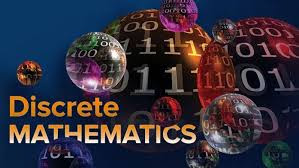Discrete Mathematics U-1(Logic and Proofs)
1. The compound propositions p and q are called logically equivalent if ________ is a tautology.
a) p ↔ q
b) p → q
c) ¬ (p ∨ q)
d) ¬p ∨ ¬q
Ans-a
2. p → q is logically equivalent to ________
a) ¬p ∨ ¬q
b) p ∨ ¬q
c) ¬p ∨ q
d) ¬p ∧ q
Ans-c
3. p ∨ q is logically equivalent to ________
a) ¬q → ¬p
b) q → p
c) ¬p → ¬q
d) ¬p → q
Ans-d
4. ¬ (p ↔ q) is logically equivalent to ________
a) q↔p
b) p↔¬q
c) ¬p↔¬q
d) ¬q↔¬p
Ans-b
5. p ∧ q is logically equivalent to ________
a) ¬ (p → ¬q)
b) (p → ¬q)
c) (¬p → ¬q)
d) (¬p → q)
Ans-a
6. Which of the following statement is correct?
a) p ∨ q ≡ q ∨ p
b) ¬(p ∧ q) ≡ ¬p ∨ ¬q
c) (p ∨ q) ∨ r ≡ p ∨ (q ∨ r)
d) All of mentioned
Ans-d
7. p ↔ q is logically equivalent to ________
a) (p → q) → (q → p)
b) (p → q) ∨ (q → p)
c) (p → q) ∧ (q → p)
d) (p ∧ q) → (q ∧ p)
Ans-c
8. (p → q) ∧ (p → r) is logically equivalent to ________
a) p → (q ∧ r)
b) p → (q ∨ r)
c) p ∧ (q ∨ r)
d) p ∨ (q ∧ r)
Ans-a
9. (p → r) ∨ (q → r) is logically equivalent to ________
a) (p ∧ q) ∨ r
b) (p ∨ q) → r
c) (p ∧ q) → r
d) (p → q) → r
Ans-c
10. ¬ (p ↔ q) is logically equivalent to ________
a) p ↔ ¬q
b) ¬p ↔ q
c) ¬p ↔ ¬q
d) ¬q ↔ ¬p
Ans-a
11. Let P (x) denote the statement “x >7.” Which of these have truth value true?
a) P (0)
b) P (4)
c) P (6)
d) P (9)
Ans-d
12. Let Q(x) be the statement “x < 5.” What is the truth value of the quantification ∀xQ(x), having domains as real numbers.
a) True
b) False
Ans-b
13. Determine the truth value of ∀n(n + 1 > n) if the domain consists of all real numbers.
a) True
b) False
Ans-a
14. Let P(x) denote the statement “x = x + 7.” What is the truth value of the quantification ∃xP(x), where the domain consists of all real numbers?
a) True
b) False
Ans-b
15. Let R (x) denote the statement “x > 2.” What is the truth value of the quantification ∃xR(x), having domain as real numbers?
a) True
b) False
Ans-a
16. The statement,” Every comedian is funny” where C(x) is “x is a comedian” and F (x) is “x is funny” and the domain consists of all people.
a) ∃x(C(x) ∧ F (x))
b) ∀x(C(x) ∧ F (x))
c) ∃x(C(x) → F (x))
d) ∀x(C(x) → F (x))
Ans-d
17. The statement, “At least one of your friends is perfect”. Let P (x) be “x is perfect” and let F (x) be “x is your friend” and let the domain be all people.
a) ∀x (F (x) → P (x))
b) ∀x (F (x) ∧ P (x))
c) ∃x (F (x) ∧ P (x))
d) ∃x (F (x) → P (x))
Ans-c
18. ”Everyone wants to learn cosmology.” This argument may be true for which domains?
a) All students in your cosmology class
b) All the cosmology learning students in the world
c) Both of the mentioned
d) None of the mentioned
Ans-c
19. Let domain of m includes all students, P (m) be the statement “m spends more than 2 hours in playing polo”. Express ∀m ¬P (m) quantification in English.
a) A student is there who spends more than 2 hours in playing polo
b) There is a student who does not spend more than 2 hours in playing polo
c) All students spends more than 2 hours in playing polo
d) No student spends more than 2 hours in playing polo
Ans-d
20. Determine the truth value of statement ∃n (4n = 3n) if the domain consists of all integers.
a) True
b) False
Ans-a




